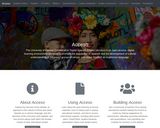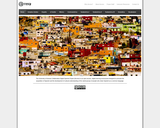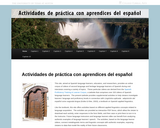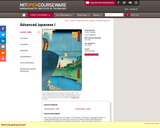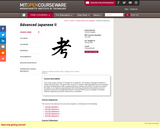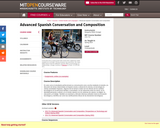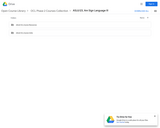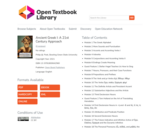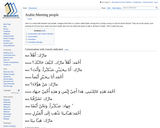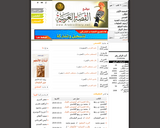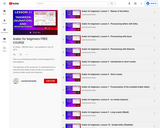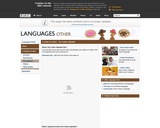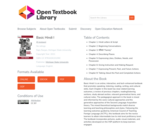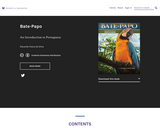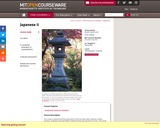In this elementary textbook, Philip S. Peek draws on his twenty-five years of teaching experience to present the ancient Greek language in an imaginative and accessible way that promotes creativity, deep learning, and diversity. The course is built on three pillars: memory, analysis, and logic. Readers memorize the top 250 most frequently occurring ancient Greek words, the essential word endings, the eight parts of speech, and the grammatical concepts they will most frequently encounter when reading authentic ancient texts. Analysis and logic exercises enable the translation and parsing of genuine ancient Greek sentences, with compelling reading selections in English and in Greek offering starting points for contemplation, debate, and reflection. A series of embedded Learning Tips help teachers and students to think in practical and imaginative ways about how they learn. This combination of memory-based learning and concept- and skill-based learning gradually builds the confidence of the reader, teaching them how to learn by guiding them from a familiarity with the basics to proficiency in reading this beautiful language. Ancient Greek I: A 21st-Century Approach is written for high-school and university students, but is an instructive and rewarding text for anyone who wishes to learn ancient Greek.
Table of Contents
Module 1 The Greek Alphabet
Module 2 More Sounds and Punctuation
Module 3 Accents and Accenting Verbs I
Module 4 Adverbs
Module 5 Conjunctions and Accenting Verbs II
Module 6 Endings Create Meaning
Guest Feature 1 Stefan Hagel Teaches Us How to Sing
Module 7 Nouns, Pronouns, and their Case Functions
Module 8 Prepositions and Prefixes
Module 9 The Verb and μι-Verbs εἰμί, δίδωμι, τίθημι
Module 10 The Verbs ἔχω, ποιέω, ἔρχομαι, φημί
Module 11 The Definite Article and Persistent Accent
Module 12 Substantive Adjectives and the Article
Module 13 Third Declension Nouns
Guest Feature 2 Tom Holland on the Art of Translating Herodotos
Module 14 First Declension Nouns in –η and -ᾱ and τίς, τί; τις, τι; ὅστις, ἥτις, ὅτι
Module 15 Attributive and Predicate Position
Module 16 Second Declension Nouns
Module 17 The Future Indicative and Infinitive Active of ἔχω, ἐλαύνω, ἔρχομαι and the Dynamic Infinitive
Module 18 The Personal Pronouns; εἷς, οὐδείς, and μηδείς; the Dative and Accusative of Respect; Time Expressions
Module 19 οἶδα and the Present and Future Indicative and Infinitive Middle and Passive of ἐλαύνω, καλέω, φέρω, δίδωμι, τίθημι
Guest Feature 3 Joe Goodkin, Singer and Songwriter
Module 20 First and Second Declension Adjectives and Common Adjectives and Pronouns: αὐτός, οὗτος, ὅδε, ἐκεῖνος, and -ων, -ουσα, -ον
Module 21 First Declension Short Alpha Nouns
Module 22 The Relative Pronoun
Module 23 The Imperfect and Aorist Indicative of λέγω, ἔχω, ἐργάζομαι, δίδωμι, τίθημι
Module 24 Contract Verbs
Module 25 The Infinitive in Indirect Statement and πρίν- and ὥστε-Clauses
Guest Feature 4 Amy R. Cohen on Performing and Translating Ancient Greek Drama
Module 26 Additional Common Adjectives: πᾶς, μέγας, πολύς, ἡδύς, ἀληθής, and -ᾱς, -ᾱσα, -αν
Module 27 Comparative and Superlative Adjectives and Adverbs; Dative of Degree of Difference
Module 28 εἰμί and εἶμι
Module 29 δείκνυμι and φημί
Guest Feature 5 Diane Rayor on Translating Sappho and Euripides
Module 30 ἵημι and ἵστημι
